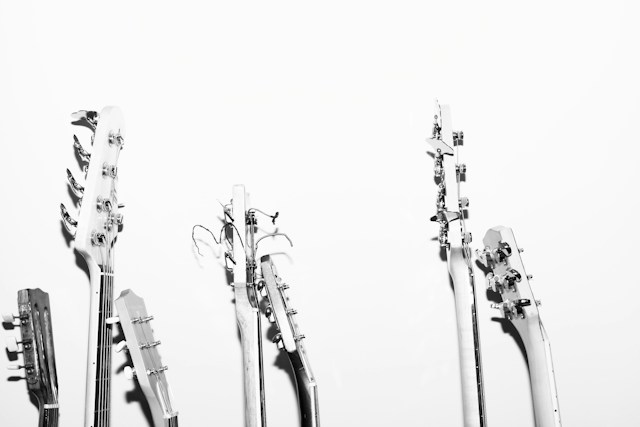In the world of rock music, few bands have crafted an auditory and visual legacy as distinctive as Rush. The Canadian trio, renowned for their complex compositions and lyrical profundity, extended their artistic expression to their album covers, creating visuals that have captivated fans and intrigued observers for decades. The evolution of Rush’s visual identity parallels their musical journey, from the raw, straightforward imagery of their early work to the intricate and symbolic designs that later defined their albums. Each cover tells a story, a visual counterpart to the band’s sonic adventures, crafted by artists who understood the depth of Rush’s music and the intellect of their audience. Hugh Syme, a name synonymous with Rush’s album art, began his collaboration with the band with “Caress of Steel” and became the mastermind behind many of their most iconic covers. Syme’s work, characterized by its thought-provoking imagery and meticulous detail, invites the viewer into a realm where music and visual art converge seamlessly.
The Narratives Behind the Covers
Among the pantheon of Rush’s album covers, few are as emblematic as “2112” and “Moving Pictures.” “2112,” with its stark, dystopian portrayal, encapsulates the album’s themes of individualism and rebellion against conformity. The cover’s image, a solitary man against a backdrop of a star-filled sky, immediately draws the viewer into the album’s narrative, setting the stage for the auditory odyssey that follows. “Moving Pictures,” on the other hand, employs a multi-layered visual pun, with movers carrying paintings while a film crew captures the scene, a wry commentary on the nature of art and its perception. These covers, among others, are not mere decorations but integral parts of the Rush experience, enhancing the listener’s engagement with the music by providing a visual foothold for the album’s themes and stories.
Innovations in Album Artistry
Rush’s album covers not only served as visual complements to their music but also as pioneering efforts in the use of design and technology in album artwork. The band and their collaborators embraced the changing landscape of art and technology, experimenting with new techniques and materials to create covers that were ahead of their time. The use of holography in “Counterparts,” for example, offered fans a tangible interaction with the cover art, a novel experience that bridged the tactile and the visual. This innovative spirit extended to the digital realm with “Vapor Trails” and “Snakes & Arrows,” where digital art techniques allowed for an unprecedented level of detail and complexity, reflecting the band’s ongoing quest for perfection and their willingness to explore new territories, both musically and visually.
The Role of Album Art in Fan Engagement
The intricate designs and hidden messages within Rush’s album covers have fostered a unique relationship between the band and their fans. The artwork invites listeners to delve deeper, to not only appreciate the music but also to engage with the visual puzzles and themes presented. This engagement creates a richer, more immersive experience, where fans are not passive consumers but active participants in the band’s artistic expression. It’s a testament to the band’s respect for their audience’s intelligence and their desire to create art that resonates on multiple levels.
Legacy and Influence on Modern Album Design
The legacy of Rush’s album art extends far beyond their discography, influencing generations of musicians and designers. The band’s approach to album cover design, prioritizing artistic integrity and thematic coherence, has set a standard for others to follow. In an age where digital formats have transformed the music industry, the enduring appeal of Rush’s album covers reminds us of the power of visual art to complement and enhance the musical experience. As new artists continue to draw inspiration from Rush’s visual and sonic legacy, the band’s innovative approach to album artistry remains a benchmark of creativity and excellence in the music world.

